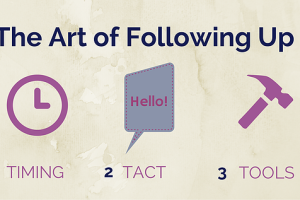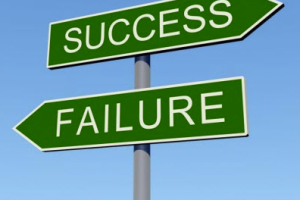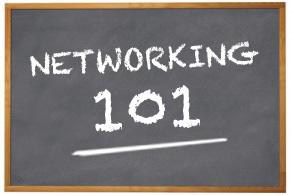A company can have a stellar product offering, but without a robust sales organization to grow revenues and expand market penetration, it may never get the product off the ground. Startups don’t always fail because they lack a good product-market fit. Sometimes they fail because they lack discipline and consistency in their sales approach. This is where a robust sales methodology can make all the difference.
A sales methodology is a start-to-finish philosophy that frames the way we do business with our customers. It helps us see the “big picture” of the sales enterprise so that we can fine-tune our approach to each new deal.
What’s more, as I am in utter agreement with seasoned entrepreneur and venture capitalist Mark Suster who explains, a good sales methodology provides a “common language” for everyone in the organization to use at various stages of the sales process. Because each customer is a little different, and because the sales process will look a little different for each company or product line, we need a basic philosophy that never changes so that we can handle our assorted sales campaigns in a uniform fashion, applying our limited resources toward the highest-potential opportunities. “Any good methodology,” says sales consultant Donal Daly, “should help your sales team enhance their selling skills, shorten the sales cycle, and close more of the right kinds of deals.”
There are several really great methodologies out there, each with their own clever names and supporting materials. For me, as I continuously fine-tune my own personal strategy, I’ve always felt the need to learn from the best, and have such, taken an approach that focuses on enhancing team selling experience, shortening sales cycles and closing (more) mutually beneficial deals. That is why, despite the obvious acronym, my methodology, F.A.S.T.E.R., helps keep me focused on improving sales velocity through better qualification and more efficient allocation of resources.
The things I’ll talk about are critical to every sale, regardless of how we implement them within our various business models.
Find the Need (and then the Need Behind the Need)
Every customer has problems, whether they are aware of them or not. Successful businesses offer genuine solutions, not just gimmicks. They bring products to market that make their customers’ lives easier and help them transact business more smoothly. The integrity of the sales profession lies in establishing mutually beneficial relationships with customers, and so the salesperson’s job begins with accurately identifying customer “pain points” and deciding whether and how a particular product can meaningfully address them on a professional and personal level. Sometimes this will involve intensively studying customers’ needs and then educating them on the obstacles they are encountering.
After all, our customers have “blind spots” just like the rest of us, and they may not even perceive the need for a “solution” in the first place. Until a prospect is able to understand the nature of the problem they are encountering and the value of solving the problem, there’s simply no future for the deal.
Articulate the Solution
Once customers understand they have a problem, they will be open to solutions, and we have to be ready to show them why our offering is the very best option for them. It would be foolish for us to assume a prospect will buy from us merely because we were the first to point out a problem, but it does mean that we’ll enjoy the first opportunity to frame how the customer thinks about the problem moving forward. This is the point where all of our research into a customer’s genuine needs pays off. Great salespeople are able to link specific product features with specific customer requirements, revealing how their solutions address exactly those things that need to be addressed—in a way that is demonstrably superior to other available options.
Spark a Fire
There are a number of factors that can impede a prospective customer’s decision to move forward, even when that customer is highly persuaded by a particular offering. Most revolve around a discrepancy between the cost to implement a solution—financial and otherwise—and the overall value to be realized post-implementation.
The customer may agree that it would be a good idea to buy, but he or she may not be convinced that it’s necessary to buy right now. Such delays can easily turn into indefinite postponements, squandering an organization’s precious resources without demonstrably moving the customer any closer to a decision. Without resorting to desperate or high-pressure tactics, the salesperson must at this point demonstrate in a highly credible fashion how a customer’s current situation requires timely action and how deferring a decision would actually be more costly than a prompt implementation.
Tag Your Advocate
Every sale needs an internal proponent—someone who represents the customer’s interests and is well-persuaded that our solution is the way to go. Such an individual will tout the value of our products with tremendous credibility and disarm detractors with more ease than we can. Recognizing these potential evangelists and passively (but deliberately) equipping them to endorse a company’s solutions is one of the salesperson’s pivotal responsibilities.
Shrewd salespeople know how to co-opt internal support for their agenda and recognize when it’s best to step back and let the customer’s own people do the talking for them.
Enter the Fray
No sale takes place in a vacuum. We may spend the majority of our time dealing with one or two people, but these are not the only key players in the decision-making task for most organizations. Secretaries represent executives, who represent the interests of their boards, who represent the interests of their shareholders.
Some of the people in an organization may be favorably disposed toward our solutions; others may prefer a competitor’s offering. Smart salespeople recognize this, and so they spend time getting to know the roles of different key players in their prospective customers’ organizations—whether they ever have direct contact with them or not.
This allows them to funnel the right information up the proper channels, and it helps them better predict when they may need to reach out to someone new when a deal stalls. Resourceful salespeople also spend time getting to know the major competitors in their industries as well as those who produce complementary goods and services.
This helps them recognize strategic partnership opportunities, analyze their competitive advantages (and weaknesses), and tailor their approaches to capitalize on their strengths in the market.
Regulate the Sale
This is a piece of sales wisdom that is too easily overlooked. In handling all of the above facets of our sales methodology, we can sometimes forget the importance of a robust sales process—and there is an important difference between methodology and process.
As noted above, the methodology provides the basic philosophical framework for a sale, but the process is custom-built to suit our peculiar market segments and business organizations. John Kenney, a senior consultant at Sales Benchmark Index, says, “A sales methodology requires the framework of a process. Without it, even the best tools and techniques will not matter for much. Unlike ‘out-of-the-box’ methodology training, it takes time to design a sales process that is mapped to the buying process.”
And I can’t agree more. The sales process will look a little different from company to company, and it will be applied a little differently from customer to customer. It involves how we allocate scarce sales resources—time, personnel, materials, and finances—in an attempt to move our prospects from consideration to decision.
Poorly organized sales teams fail to assign these resources efficiently, and they end up spinning their wheels because of misaligned priorities. Then, when customers are ready to buy, we run the risk of not being ready to sell, and vice-versa. Good salespeople are able to recognize when it’s time to leverage additional resources to close a deal and when it’s wiser to back off and put a deal on the back burner for a little while. They do these things purposefully, in a manner that lets them remain firmly in control of their organizations’ sales processes.
Notice that each of the letters in F.A.S.T.E.R. stands for a verb.
These are all action words, reminding us that we are responsible for doing something to make these things happen. The point of a sales methodology is to give focus and forward momentum for our organizations, helping us see where our sales processes work and where they need tweaking, ensuring that we’re not squandering valuable resources where they’re not needed—and making sure we’re not overlooking opportunities to close deals that are further along.
Now that we have a broad overview of the different facets of the F.A.S.T.E.R. approach to sales, in the next post, I’ll spend more time detailing, “Find the Need (and then the Need Behind the Need)”.








